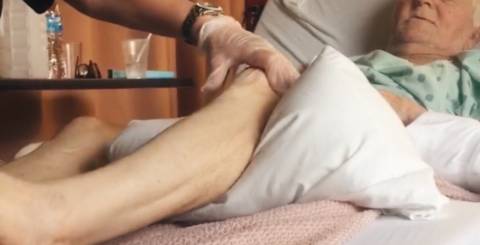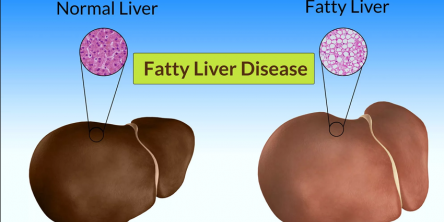Misconceptions About Inpatient Rehabilitation

Inpatient rehabilitation provides comprehensive and intensive inpatient rehabilitation and ongoing medical management to patients with functional impairments following disabling illnesses and injuries. Patients are most likely referred to these facilities by their doctors and oftentimes have hesitancy because of the many misconceptions about rehabilitation programs. Let's take a look at the misconceptions and help clarify the truths.
- Misconception 1-Patients can stay for many months.
The average length of stay is around two weeks. It all depends on your injury and what your rehabilitation plan is. This average includes patients who have had massive injuries such as strokes, severe traumatic brain injuries, and new spinal cord injuries. Those types of injuries usually involve a longer stay. A patient who has suffered from pneumonia or fracture may have a significantly shorter length of stay.
- Misconception 2- Patients will be 100% back to normal when they leave rehab.
Some patients may regain their full functional independence by the time they are discharged, but many do not. Many have to learn a new way of doing things in their day-to-day life. The rehabilitation teams work hard with each patient to develop goals that are based on the diagnosis and these goals continue after a patient is discharged.
- Misconception 3- Rehabilitation facilities don't accept admission on weekends or holidays.
This can be partly true. Some facilities do not while others do. This depends on staffing and the type of rehabilitation the facility offers. Many times referrals to a rehabilitation facility are planned in advance to avoid these types of issues.
- Misconception 4- It is cheaper to send someone to a rehabilitation center than to keep them in a medical or surgical unit.
All of these things are expensive. Providing one on one therapy daily is costly for each patient. Inpatient rehabilitation is cost-effective if the patient needs the rehabilitation and is expected to gain functionality from these therapies.
- Misconception 5- Medicare patients must have 3-day hospitalizations before transferring to an inpatient rehabilitation facility.
As a patient you must have qualifying hospitalization records of three or more days before your care in a facility is covered but this does not apply to inpatient rehabilitation, it applies to skilled nursing facilities. Patients can be admitted at any time once they are medically able to participate and benefit from the therapy programs.
- Misconception 6- Inpatient rehabilitation facilities are good places to send those with drug and alcohol problems.
Inpatient rehabilitation facilities are not drug and alcohol rehabs. The only reason a patient would be admitted with these problems would be if they have sustained an illness while intoxicated that gives them the need for additional therapies.
- Misconception 7- The right time to admit the patient for rehabilitation is always when the hospital team is ready to discharge them.
Most rehabilitation facilities go to great lengths to admit patients quickly. There are circumstances where a patient's ability or willingness to admit may not align with the plans of the discharging service.
- Misconception 8- Rehabilitation is a great place to complete medical work that was not completed while in the hospital.
All necessary medical work-up should always be done before transferring to rehab. The only reason this wouldn't be done is if something can wait and be done as an outpatient situation.
- Misconception 10- Inpatient rehabilitation is depressing for the patient.
One of the main focus points of rehabilitation hospitals is the mental health of the patient and the main approach to every aspect is to keep their spirits high. Rehab is where patients do to help improve their already improving conditions and help them regain their independence. This can be met with tears and times, but there is always someone there to uplift and inspire the patient as they are overcoming their obstacles to achieve their goals. Inpatient rehabilitation is one of the best resources for a patient in recovery. It provides comprehensive and intensive inpatient rehabilitation and ongoing medical management to patients with functional impairments following disabling illnesses and injuries.
Similar Articles
We often experience small discomforts or symptoms that seem insignificant, like headaches, fatigue, or brittle nails. Many times, we brush them off, thinking they’ll go away on their own. However, these minor issues might be your body’s way of telling you that something more serious is going on.
According to the World Health Organization (WHO), half to three-quarters of adult persons globally experienced a headache in the past year. Unfortunately, tension headaches are one of the most prevalent symptoms you can have. Furthermore, some tension headaches resemble migraine headaches, making matters worse.
The review of Yakrit Plihantak Churna is going to be amazing. You will know the facts, does it works along its benefits. The liver is the main engine of the body. It is the second largest gland in the body.
A podiatrist is a doctor who focuses on treating foot and ankle ailments. If you have specific medical issues, you may need to see a podiatrist for therapy that your primary doctor cannot offer. Don't overlook pain in your lower leg, foot, ankle, or toes.
A podiatrist is a medical expert who focuses on foot and ankle care. There are various reasons you may need to see one.
Swelling is a common issue that can strike anyone. Occasional leg swelling may occur after a long day on your feet or from sitting too long. However, if your legs are regularly swollen, it could indicate a serious underlying condition. Swelling can cause leg pain, loss of sensation, redness, and itching. If left unmanaged, it can lead to stiffness and difficulty walking.
Choosing the best aesthetic medicine courses will significantly boost your career. Medical professionals looking to expand their practice and stay ahead in the field of aesthetic medicine will find these training programs invaluable
Lower back pain is like a storm gathering over the horizon all day. The dull discomfort, the throbbing feeling, and the stiffness all add up until, like a thunderclap, it explodes into full-fledged pain. It penetrates your whole body, removing choice and control. Your mobility is restricted, making daily tasks difficult, and if not addressed, it can cause permanent damage.
Even though migraine affects over one billion people around the world, it has long been neglected as one of the most devastating diseases on the planet. Migraine headaches are a neurological disorder characterized by recurrent pounding or throbbing headaches, nausea and vomiting, and sensitivity to light, sound, and strong odors









